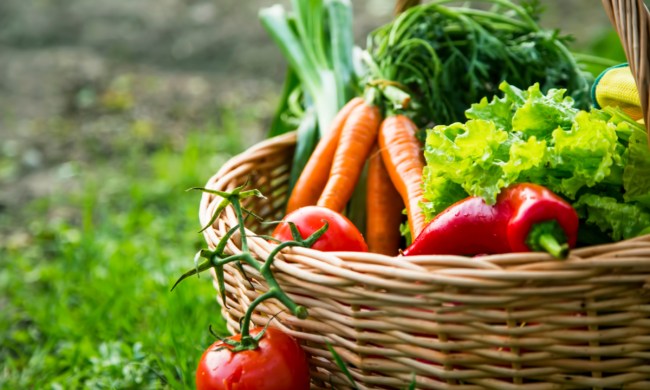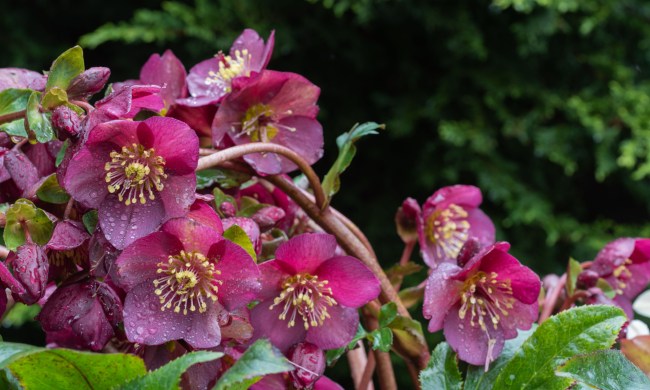Rocks gardens are a simple way to design a garden with visual interest, especially if you live in an area where keeping a lawn full of grass alive is challenging. Rocks gardens are often home to drought-tolerant plants, as they most commonly mimic desert or mountainous environments. Easy to set up and simple to maintain, the only question left is what will you plant in it? There are many options, but if you want to know where to start, then you’re in the right place! This list of a few of our favorite plants for rock gardens will help you start to plan your very own gorgeous rock garden.
What types of plants grow best in rock gardens?

Rock gardens are best suited for drought-tolerant plants that can grow in poor, rocky soil. While you can grow other types of plants in a rock garden, it will take more effort on your part. Mixing compost into soil that’s full of rocks can be tricky, for example, so growing plants that need rich soil is more challenging.
Desert and mountain plants are among the best plants for rock gardens, as they easily adapt to these conditions. Native wildflowers and cacti species are among the best choices, and it’s easier to care for your rock garden if you choose perennials or self-seeding annuals. Getting in between the rocks to replant your garden every year isn’t impossible, but it can be inconvenient.
Ice plant

Ice plants, or delosperma, are beautiful flowering succulents that often grow in containers or as ground cover. Native to parts of Africa, ice plants thrive in warm, rocky soil and are stunning to look at. They have small rounded leaves that are a frosty green color, and the flowers come in an array of vibrant colors, from deep burnt orange to bright violet.
There are plenty of multicolored varieties as well, some of which have unique color combos, such as orange and violet. Delosperma is a great option for smaller rock gardens or for filling gaps in a larger garden. They stay fairly short, but can spread if given the room to do so.
Penstemon

Penstemon, sometimes called beardtongue, is a great option for drought-tolerant pollinator gardens. Bees and hummingbirds both love the bright, tube-shaped flowers on this lovely perennial. Penstemon flowers are found in shades of blue, pink, purple, and red, and while most varieties have green leaves, there are a few with deep purple foliage that will stand out against light-colored rocks.
Penstemon flower spikes can grow up to 3 feet tall, so make sure to give them a bit of room to grow when you plant them. It’s also a good idea to plant them behind shorter flowers, so they won’t block the smaller plants from view.
Hen and chicks

Hen and chicks, named for the plant’s habit of growing several smaller rosettes around the larger main one, can also sometimes be called common houseleek or sempervivum. These lovely succulents look similar to echeveria, with thick leaves that form spiral or rose-like patterns.
Hen and chicks will spread to create a carpet of colorful leaves, making it perfect for filling in sections of a rock garden. If you choose older rocks with cracks in them, you can even plant these lovely succulents in the rocks themselves! Additionally, while many hen and chicks start off as red, green, or yellow, they can change color each season, and sometimes have dramatic color shifts.
Stonecrop

You might know this plant as stonecrop or sedum, but no matter what you call this gorgeous succulent, it makes a great addition to any rock garden. If you want a lot of variety without much effort, stonecrop is the way to go. It comes in many sizes, shapes, and colors, from the thick, trailing leaves of burro’s-tail sedum to the beautifully floral autumn joy stonecrop.
No matter what sort of aesthetic you are aiming for, there’s sure to be a type of stonecrop that matches. This variety also means it can fill a number of roles in your rock garden, from a low-lying groundcover to a taller, showier statement piece.
Lewisia

Lewisia is a lovely flowering plant native to the western U.S., where it is common to find on rocky cliff sides. With beautiful, smooth flowers that come in many shades of pink, orange, red, white, and yellow, these evergreen perennials are right at home in any rock garden.
They have flat, green leaves that tend to stay close to the ground, with tall, narrow stems topped with bright flowers. The stems can clump together in a natural bouquet of color or splay out for a more unique appearance, depending on the plant. These native beauties are sure to delight you and your guests when you see them nestled among the rocks.
These plants for rock gardens are just the starting point, but they do make for a solid foundation. From here, you can decide what sort of aesthetic or environment you want your rock garden to focus on. For a succulent garden, start with sempervivum and sedum and explore more succulents and cacti. For a more floral garden, pick up some lewisia and penstemon and go from there. There are so many fun options to explore!




